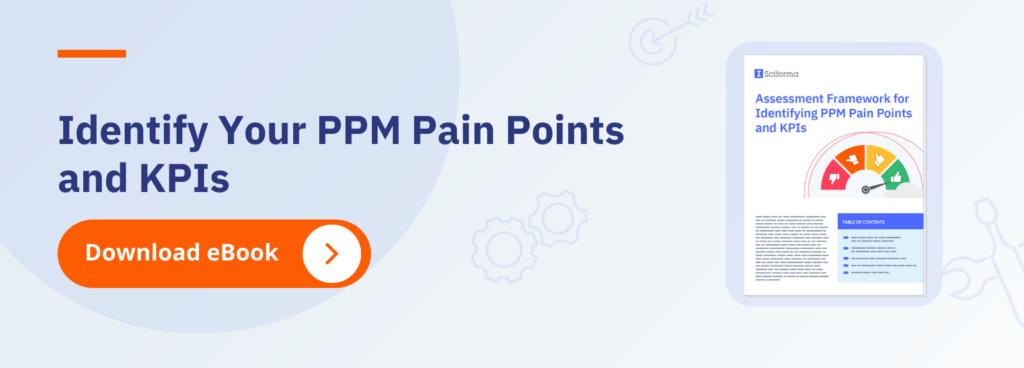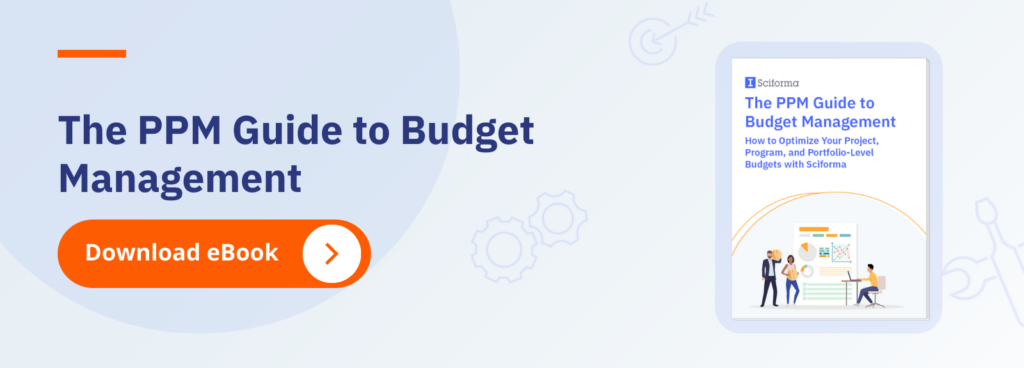- Home
- Blog Center
- PPM Advantages and Disadvantages of a PMO
PPM Advantages and Disadvantages of a PMO
If you’re exploring the topic of implementing a Project Management Office in your organization, you are probably aware that PMOs are designed to streamline and improve project activities. But tying that action with visible and measurable business value or bottom-line improvement may not necessarily be obvious. Yet those kinds of high-level, big-picture organizational benefits are precisely what you’re hoping to drive by creating a PMO. Here is an overview of the key PPM advantages and disadvantages of implementing a PMO.
5 PPM Advantages of a PMO
Advantage #1: A PMO to Fix Key Business Problems and Pain Points
A key problem for many organizations is time wasted on non-value-added tasks. A PMO can effectively mitigate this by consolidating all project-related data into a centralized repository. By doing so, the organization gets the proverbial “single version of truth” and ensures consistent data visibility and integrity. Critically, this saves time previously spent searching for information across folders, emails, and distributed Excel spreadsheets. Overall, a PMO equipped with the right capabilities can drive a 25% reduction in time spent performing non-value-added tasks manually.
Other widespread business problems include a high rate of projects that fail to deliver the expected business value. This may stem from a suboptimal project selection process or poor project execution, or from elongated project completion times, which tie up key resources and delay time to market. By auditing and optimizing processes, tools, and best practices, PMOs have the power to solve such business pain points.
Advantage #2: A PMO for Improved Control Over PPM Activities
Project Management Offices seek to develop and enforce standard processes across their domain to improve uniformity across project teams. Those standards may apply to the full range of project-related activities, including: data collection, reporting, project tracking, and cross-team communications.
With a PMO standardizing methods, practices, and project language across the board, you can eliminate misalignments. Your PMO will also oversee and monitor the course of execution and its related activities. This is to ensure everything stays perfectly under control, that each team member is doing what they are supposed to be doing at the right time and completes within the deadline, that best practices are applied and replicated, and that all projects are on track to succeed.
Project Management Offices also establish a governance structure, defining clear responsibilities and determining who’s accountable for what. This way, in case of unanticipated problems or unexpected events, a clear chain of command expedites resolution.
Advantage #3: A PMO for a Better Handle on PPM Data
Many organizations and business leaders are plagued by subpar data visibility and not-so-reliable reporting. Without the right process and the right tools, collating, generating, and sharing reports can eat at project manager time. Plus, manually produced reports are not necessarily consistent, as each project manager will use the tools of their choice. As a result, reports edited by different project managers may not be comparable.
A PMO will make sure that the organization enjoys a comprehensive view of all projects and portfolios by consolidating all the data into a single repository with automatic updates in real time. Accordingly, the PMO is enabled to support high-level management teams with comprehensive and clear information on everything project related. Decision-makers get consistent standard reports, with engaging and compelling data visualization to facilitate information consumption.
The PMO is, in a way, the custodian of the data. With the support of professional tools, PMOs guarantee the quality and accuracy of the information they use and report. Digital systems consolidate the information, leaving no room for discrepancy, and store it safely to guarantee integrity. Improved accuracy of planning, resource, schedule, and budget data enhances the organization’s ability to make optimal decisions. That accurate data can be automatically processed and cross-analyzed to deliver insights that’ll further improve decision-making abilities.
Advantage #4: A PMO for Improved Profitability
As the PMO automates basic, non-value-added activities, such as putting together reports, you’ll see significant productivity gains. This means that you’ll make more out of your investments in productive resources. All the more that most PMOs also tackle the issue of resource allocation.
Fine-tuning resource management will not only sustain overall productivity by preventing over- or under-allocation of key workers, but also improve project cycle times: your Project Management Office will help ensure that the right resources with the right skills are available for your highest value projects and that they are working at the maximum utilization rate achievable. Ultimately, this enables your firm to compete more effectively by positively impacting not just budgets but customer satisfaction and market share.
Advantage #5: A PMO to Position Your Firm for the Future
As organizations strive to do more with less, they depend on their PMOs to ensure that scarce resources go to those projects deemed most valuable. The PMO’s demand management capabilities can help select and prioritize the best projects, optimizing business alignment and strategic impact. The goal is to improve the percentage of projects that deliver value.
Because your PMO can spearhead large strategic initiatives, it enables organizational change and contributes to key business outcomes such as profitable growth and long-term competitiveness.
3 Project Portfolio Management Disadvantages of a PMO
Although a Project Management Office can bring substantial benefits to project-oriented businesses and organizations, it is key to ensure that the payback from your future PMO will justify the investment.
Administrative Overhead
Let’s start with one of the more obvious disadvantages of a PMO: the financial costs of establishing and maintaining a PMO (payroll, tools, offices, etc.). Building a PMO from scratch will require considerable time and energy from your project leadership and populations. Someone has to:
- conduct an audit of the established practices,
- assess the organization’s requirements,
- formalize a PMO mandate and roadmap
- hire the required resources
- shop the market to find the right PMO tool
Sound exhausting? Yep, creating a PMO is quite some work! This is one of the key project portfolio management disadvantages of a PMO.
Further down the road, once your PMO is up and running, you may find that the extra layer of scrutiny and control creates a time overhead. This can put additional work on your project managers, who’ll typically have to create more reports.
Ill-Suited PMOs
There are countless examples of PMO failures. This can be because:
- the organization put the PMO together hastily, without really thinking it through
- project leaders failed to position the PMO correctly, or chose the wrong type for their organization
- a once well-suited PMO failed to adapt to market or organizational changes and eventually lost relevance
There are also times where a Project Management Office was flawed by design. For instance, some PMOs fail to establish and enforce uniform processes. They actually make things more complicated for project teams instead of facilitating their work. Or the scope defined for the PMO might be too limited for it to address the organization’s goals. The governance might be too focused on operational project metrics to really serve the strategic directions of the business. Last but not least, the staff of the PMO might not be qualified enough to deliver on its mission.
Among the most common shortcomings of ill-conceived PMOs are a lack of clarity as to their roles and responsibilities. When establishing a new management structure, ambiguity and confusion are usually fatal. The purpose, mandate, and scope of the PMO should be clearly defined and communicated across the organization.
Perception Issues
Another domain requiring great clarity and a communication effort is the action and impact of the PMO. In other words, your PMO needs to demonstrate how it “pays” for itself and which improvements it brings to the organization.
If your people can’t feel and see the benefits they get from your PMO, they are more likely to view it as a “Big Brother” created to monitor and track their every move, and/or as a rigid, administrative structure that destroys value by wasting everyone’s time. This is clearly a disadvantage for PPM activities.
It usually pays to formalize the roadmap and objectives of your new PMO and then document progress over time. Ensure that the KPIs you choose to measure that progress are compelling enough. They should enable you to demonstrate short- to mid-term improvements.
Conclusion
For a majority of project-oriented organizations, creating a Project Management Office is undeniably a smart move. A proper PMO will bring a vision to their project and portfolio management, creating efficiencies at scale. However, implementing a new management structure like a PMO is an investment in more than just PPM processes, which brings its advantages and disadvantages.
A PMO is hardly a magic wand that’ll make all of your problems and pain points vanish instantly. In order to deliver the expected organizational benefits, your PMO must create tangible value for the organization. To balance the PPM advantages and disadvantages of a PMO, you also need to allow for the organizational costs associated with the creation, deployment, and maintenance of a structure specifically dedicated to the management of projects and portfolios.











